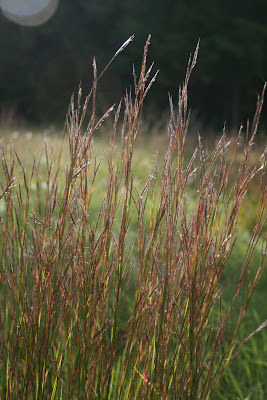We spent the Labor Day weekend in Charlotte, Vermont, celebrating three birthdays in the family and hiking. Each day we hiked higher and higher. On Saturday we climbed Mt. Philo in Charlotte. Located within the oldest State Park in Vermont, the 968' high mountain is more like a high hill, but still offers a grand view of the Champlain Valley. Ribbons of hardwoods wind around fields of corn, vegetables, hay, pasture, and meadow. Champlain Lake spreads out beyond and the Adirondack Mountains rise up in the distance. Although we were a bit early for peak hawk migration -- turkey vultures, an osprey, and an immature bald eagle soared past.
The view from atop Mt. Philo
On Sunday we drove farther south to the Snake Mountain Wildlife Management Area. My young nieces were along for this hike. After a slow start, they rallied and we all reached the top. At 1,287' Snake Mountain offered yet another grand view of the valley, lake, and mountains. A large concrete slab at the top is the former site of the Grand View Hotel. This name was used instead of Snake Mountain, thinking that people might be scared off by a reptilian name.The mountain was actually named for its serpentine ridgeline. The trail to the top passes through Wilmarth Woods, a beautiful oak-northern hardwood forest owned by The Nature Conservancy, and the Snake Mountain WMA. Both Mt. Philo and Snake Mountain are hugely popular.
The view from atop Snake Mountain
On our way home we traveled back roads through Vermont. We drove through Lincoln Gap, noticed many cars, and decided to stop and hike part of the Long Trail -- the oldest long-distance trail in the country. A beautiful Labor Day brought many people to the same spot. We counted 60 cars when we arrived back at the car. Despite the crowds, we were alone along many stretches of the 2.6 miles to the height of land - Mt Abraham. At 4,006,' it is the fifth highest peak in Vermont.
A small area of alpine vegetation marks the top of Mt. Abraham with views stretching out in all directions. We saw Mt. Mansfield to the north and took in sweeping views of the Champlain Valley to the west.
A view from atop Mt. Abraham
The three-hour round trip hike was well worth the effort. A tinge of color on the upper slopes offered a peek at what must be spectacular fall foliage later this month. We descended Lincoln Gap Road, the top portion of which is closed in winter, to the small village of Warren. Here we found the Warren Store with an awesome deli with outside seating overlooking a small waterfall. A fine ending to three days of hiking in the Green Mountain State.










































